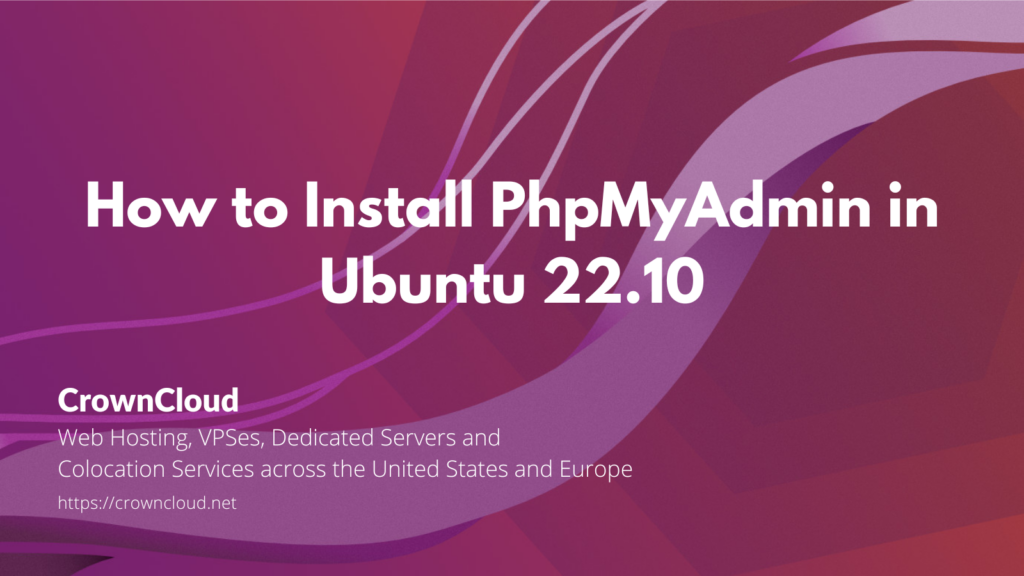Hello,
In this week’s feature highlight, we look at How to Install PhpMyAdmin in Ubuntu 22.10

In this guide, we will demonstrate how PhpMyAdmin is installed on a Ubuntu 22.10 system. PhpMyAdmin requires a standalone Database or as part of the LEMP stack, installed and running on the system beforehand.
Prerequisites:
Server with Apache, PHP, and MariaDB. You can find our LAMP Installation guide here.
Installing PhpMyAdmin
apt install phpmyadminOutput:
root@crown:~# apt install phpmyadmin
Reading package lists... Done
Building dependency tree
Reading state information... Done
The following additional packages will be installed:
dbconfig-common dbconfig-mysql icc-profiles-free javascript-common
libjs-jquery libjs-openlayers libjs-sphinxdoc libjs-underscore libzip5
php-bz2 php-google-recaptcha php-mysql php-phpmyadmin-motranslator
php-phpmyadmin-shapefile php-phpmyadmin-sql-parser php-phpseclib
php-psr-cache php-psr-container php-psr-log php-symfony-cache
php-symfony-cache-contracts php-symfony-expression-languageCreate Symbolic Link
Create a symbolic link from the installation files to Nginx’s document root directory.
ln -s /usr/share/phpmyadmin /var/www/html/phpmyadminEnter it into your browser’s address bar to check that phpmyadmin is installed. http://yourserver-ip-address/phpmyadmin/. You should see a page similar to the below one.

Done!